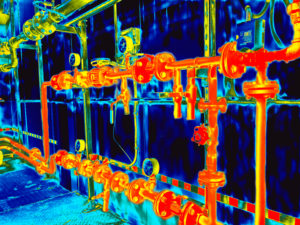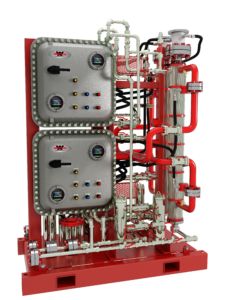Top Advantages of Electrical Heating
Last updated on January 16th, 2024 at 02:17 pm
 Thermodynamic systems encompass the transfer of energy. This can be studied in one of three systems: open systems, closed systems, and isolated systems. Heat transfer can only take place between open and closed systems. As technology abounds homes and businesses alike have taken to using many open and closed systems to reduce costs and improve energy efficiency. Energy, in the form of heat, is quantifiable, and can be converted in electricity. The energy generated from an electrical heating system is considered a primary source of energy. This energy is obtained from its original source and the construction is quite simple:
Thermodynamic systems encompass the transfer of energy. This can be studied in one of three systems: open systems, closed systems, and isolated systems. Heat transfer can only take place between open and closed systems. As technology abounds homes and businesses alike have taken to using many open and closed systems to reduce costs and improve energy efficiency. Energy, in the form of heat, is quantifiable, and can be converted in electricity. The energy generated from an electrical heating system is considered a primary source of energy. This energy is obtained from its original source and the construction is quite simple:
- The heat causes the particles to vibrate and molecules move.
- Thermoelectric devices then convert the heat into electricity.
In this world of thermodynamic laws the newest technological developments in electrical heating have brought immersion heaters to the forefront of the oil and petrochemical industries. Unique in their design, these systems heat liquid in lieu of air. Other forms of heating sources, such as gas, are designed to heat the air in a given room. Immersion heater devices, however, are on the inside of tanks or vessels with the purpose of heating liquids around the device.
Immersion Heater Types
 Electric immersion heaters can cater to various industrial heating requirements, making them suitable for a myriad of petrochemical and other industries. The three types of immersion heaters include flanged, circulation, and over-the-top.
Electric immersion heaters can cater to various industrial heating requirements, making them suitable for a myriad of petrochemical and other industries. The three types of immersion heaters include flanged, circulation, and over-the-top.
- Flanged immersion heaters are designed for the installation inside of pressurized tanks or vessels and are typically used to heat industrial liquids including heat transfer fluids, water, oil, or corrosive solutions. In addition, electrical heating elements can be used to heat hot water storage tanks, boiler equipment, food processing equipment, or rinsing and cleaning equipment
- Circulation immersion heaters can be utilized to heat water or to heat transfer oil heating, waste oil heating, or drain valves.
- Over The Top immersion heaters effectively heat liquids such as water, oils, acids, salts, or solvents.
All three designs offer efficient heating capabilities of liquid mediums, perfect for industrial or residential use.
Top Advantages to Immersion Heaters
A) Durability
Throughout the oil industry, these heaters offer the right amount of heat necessary to ease the flow through pipes. Once installed, the technological modifications of these heating systems can withstand extreme environmental and weather conditions. All while lasting longer than similar heating systems.
B) Safety
The controlling device for the immersion heaters is attached to the heater in such a way that the control box can be located on an exterior wall, adding to safety. Should anything go wrong with the controller or heater, this alleviates any need to empty the tank. Electrical heating devices have fewer moving parts and as a result, do not require as much space.
C) Constant Temperatures
The heater can maintain the load at a constant temperature, which prevents the oil from rotting up. This also prevents the development of carbon on the interior wall which would otherwise disrupt the heat transfer process. For example, Orlando Florida is experiencing falling temperatures (November 2014), forcing manufacturers to use electric heating as a method of keeping their applications at acceptable levels.
D) Environmentally Sound
Comparatively, electric heating systems do not generate carbon emissions, making it an arguably more environmentally sound heating option.
E) Noise Reduction
With electric heating systems, no flame exists, rather the motor and the heating components. All of which are significantly quieter than an alternative heating system.
F) Reduced Costs
Electric heating elements like the immersion heating system offer reduced costs. The heating of liquid in lieu of the air in a given room or space alleviates any waste produced by trying to heat the air around the item. In addition, heating oil for a gas heating system is significantly more expensive than electricity. In some areas, the cost of natural gas may also be higher than electricity. Wood burning stoves are a popular alternative heating source, and yet the repeated costs of maintenance and materials far exceed the minimal investment of an immersion heating system.
Overall, selecting the appropriate immersion heating design offers efficient heating capabilities for liquid mediums, an ideal solution for industrial or residential use.
